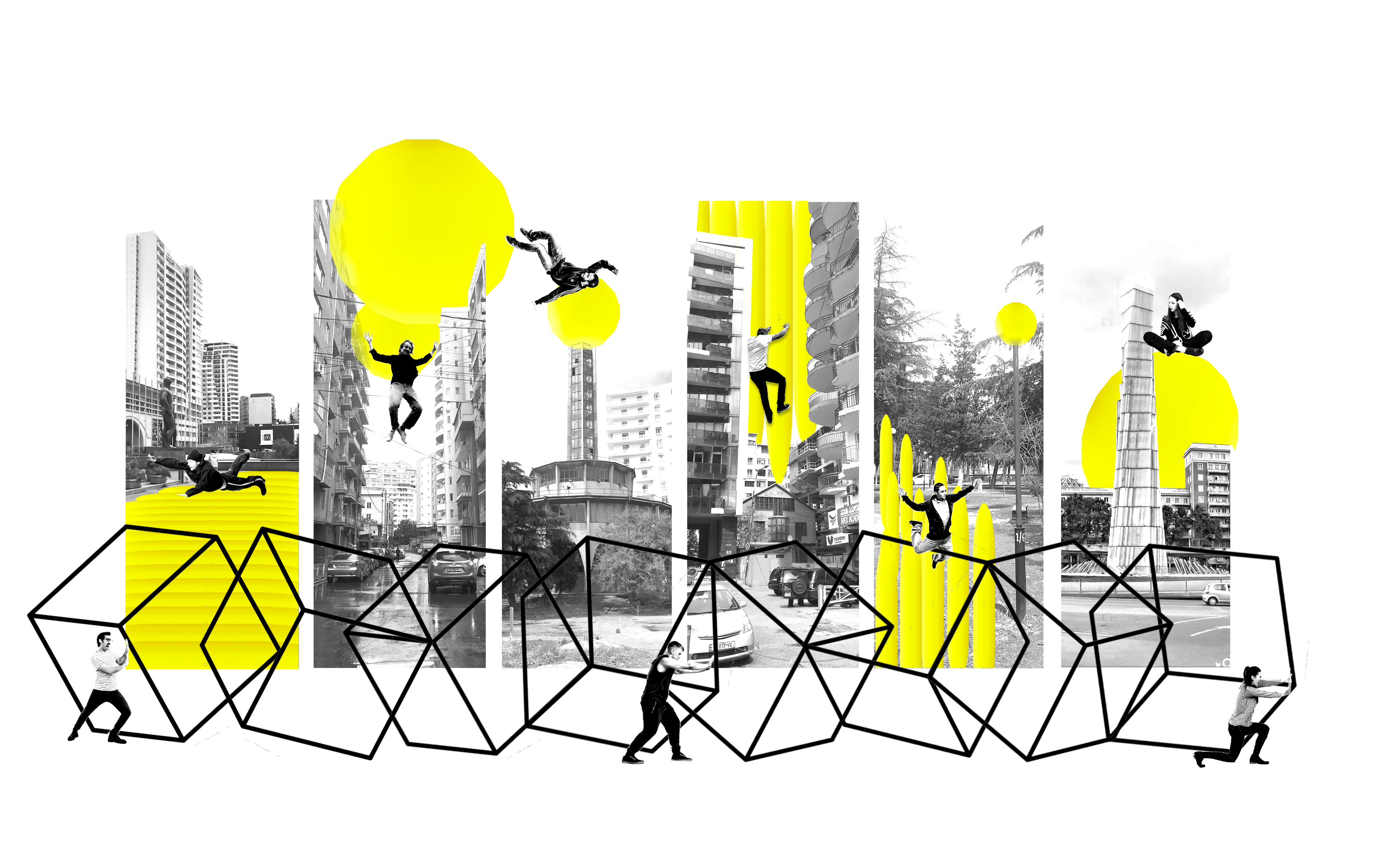













Labyrinth
of Affordances
Elisa Pastorelli
The pergola, traditional archetype par excellence and invisible monument of the Tbilisian sociality has been reinterpreted as a prostethic device in a series of ephemeral, temporary and interactive structures. Each object becomes a participatory architecture where youngsters can feel empowered by actively taking control of the space and of the surrounding environment. Moreover, escaping from the boredom of the Tbilisian ordinary life, they can be engaged with playful and creative constructs. Accordingly, the neighbourhood of the Academy City becomes an urban playground where the public spaces, from the most common to extreme contexts such as infrastructural nodes, are temporarily occupied and re-activated. As a juxtaposed layer, the pergolas can be assembled in various compositions to respond to individual and group demands of space, providing different affordances and temporary places to create, think, gather. Each item is thought as a single module that can work both individually and in a system.
The ludic dimension is enhanced by the image of the labyrinth and by the use of inflatables. The image of the labyrinth is connected to the idea of complexity and fragmentation of the built environment, that encourages spatial disorientation and confusion and aims at the creation of impermanent and liminal situations. Accordingly, each module can be arranged in different spatial configurations by people, allowing them to unconsciously create a more symbiotic and natural relationship with the city, overcoming its predefined physical constraints.
The inflatables, due to their ephemerality and color, create a strong visual impact, a sense of unfamiliarity and a marked contrast with the existing built environment, subverting the notion of Soviet monument.

